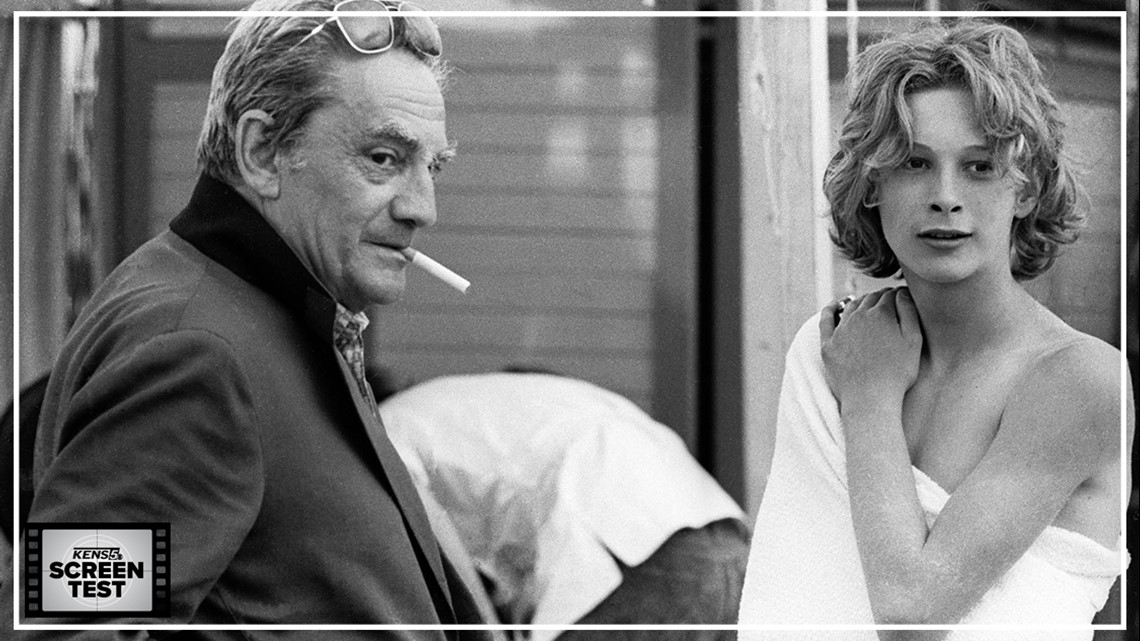Anyone who watched Ari Aster’s 2019 stunner “Midsommar” will recall that the point of no return (for both character and audience) arrives with a dive off a cliff, as a mute Hårga ends his life by plunging towards stony ground, per cult code. His pained screams eventually silenced with a casual swing of a mallet, we didn’t much concern ourselves with who the character was so much as what this madness bodes for our protagonists. Yet there’s something about the actor’s spectral physique – bearded and bone-thin and darkly beguiling – that burned itself into the mind.
Jump back several decades, to a 1970 audition across the Atlantic for Luchino Visconti’s upcoming “Death in Venice,” where a casting director noticed the same otherworldliness about that actor, Björn Andrésen—only at this point he’s 15 years old, sporting locks of blonde hair draping an angelic face and a made-for-the-big-screen smile. When he’s asked to smile, that is. That grin would launch the young Swede to top-tier celebrity status at Cannes in some months’ time, where Visconti declared Andrésen “the most beautiful boy in the world.” Cameras flash in agreement, yet we can’t help but notice something about him that was also evident at the screen test: A look of insecurity, of awkwardness, of I-don’t-really-want-to-be-here mistaken for a constructed sheen of vulnerability. “He seems frail, and that’s really beautiful in film,” someone attuned to these matters says, either unaware or just fine with the fact that they’re exploiting it.
Exploring what was to come of that exploitation is only partially the point of “The Most Beautiful Boy in the World,” a new documentary from Swedish co-directors Kristina Lindström and Kristian Petri that makes for a fascinating exercise in diving so deep into a subject’s story that we find ourselves in their headspace, and at the mercy of their memories, whims, regrets. If it was possible for Andrésen’s brief, dialogue-less appearance in “Midsommar” to blossom into whole new potential for metatextual meaning, Lindström and Petri’s disarming doc accomplishes it by giving in to the ghostly visage of someone looking into himself to find himself.
The documentary’s approach seems orthodox until it isn’t. “The Most Beautiful Boy in the World'' showcases an inherent element of nonfiction storytelling that too many documentarians end up disguising in the final work—the idea that the questions we initially set out to answer are not always the ones that are most intriguing later on. As the movie cuts from the bright lights of Cannes to a present-day Andrésen – just as frail as when he appeared in “Midsommar,” his hair just as long and a bit more haggard – being lightly scolded for keeping the gas burner on in his ordinary apartment, we can imagine Lindström and Petri’s first, most pressing question: At what point does being “the most beautiful boy in the world” stop being enough? Andrésen became a sensation for his beauty and for the currency that his beauty afforded him, even as it only seems to have paid off for those who wanted to be in his orbit. Even before we learn about the contract he signs to stick around in showbiz, we begin to draw parallels with the tragedy of Judy Garland, who was at least groomed for child stardom; Andrésen was practically born into the spotlight. An ominous score of droning percussions and muted screams (it wouldn’t be out of place in “Midsommar”) confirms that this is less a real-life tale about attaining glory than being mercilessly tugged into the dehumanizing jetstream of universal recognition.
We come to learn it was his grandmother who sought that recognition for Andrésen – there’s one major piece of the puzzle found – but she couldn’t have imagined how far he would go, and how quickly. We don’t come to know for sure; the documentary refrains from deeply interrogating her role. Instead, it steadfastly takes the global nature of the nickname Visconti bestowed upon Andrésen to heart, visiting Japan to gather the accounts of a music producer who witnessed his rise and also of an artist who incorporated him into anime shows, equally struck by his heavenly appearance (to the point where he’s an animated model for a female character). With Andrésen also in these scenes, it comes to feel like a traveling living wake.
But those fans don’t carry the burden of having had to live up to superlativity, and for as much insight as we receive about how Andrésen was viewed by others, it’s still only a celebration of their own fascination. Meanwhile, notice the sullen look in his eyes while listening to their words, because it’s vastly more emotionally informative—we spot regret and reckoning. Lindström and Petri are generous in allowing their subject room to speak for himself, and when he reflects on the early months of an adolescent life that became something else entirely with the speed of a camera’s flash, his voice, as deep as centuries-old lore, still yields a noticeable relief of someone finally telling his story on his own terms.


And it turns out Andrésen’s story – his real story – is one of lingering traumas of the most personal kind, rooted in tragic interruptions of fate. His mother took off when he was young and met a grim end, the particulars of which remain unknown. He never knew his father. His own son’s life ended in tragedy. And so, Lindström and Petri lean into newly surfaced questions – ones of emotional compromise and unknowability – while embracing an adjustment in storytelling intention, a malleability in their execution. “The Most Beautiful Boy in the World” may begin as a fairly straightforward documentary of talking heads and historical education, but it morphs, rather organically, into something more elusive, yet also more illuminating. It’s telling that it feels so natural when Lindström and Petri stop dipping their toes into the past in order to focus on the present, the vignettes of which include our bearing witness to a tense over-the-phone argument between Andrésen and his girlfriend. He follows by, finally, seeking some closure, beginning with his mother’s story.
By that point, a reversal has taken place before our eyes: Andrésen isn’t following the filmmakers so much as the filmmakers are following him. His motivations are fully in the driving seat, and the movie follows suit, giving way to a second half that is sadder and more profoundly consequential than what came before. We watch as an obvious subject for documentary evolves into a much more haunting series of observations, centered on a man spending the late stages of his life wondering how much agency he still has. Would he even recognize agency if it was in his grasp?
The movie’s aesthetics shift to fit these cosmic wanderings and wonderings. Grainy archival footage of Andrésen’s youth is now utilized to eerie effect, while cinematographer Erik Vallsten’s moody glimpses of a lonely Andrésen traversing a beach at dusk suggests a man finally arriving at the shores of spotlight-less reality. In the most mesmerizing of these moments, Lindström and Petri collapse decades of time between cuts to show Andrésen gazing at his 15-year-old self wading out into the waters—or otherwise diving off the cliff of ambiguity. What does he wish he could say to himself? The directors don’t presume to have a right to know. But as there was in 1970, we can perhaps make out a hint in Andrésen’s eyes. And a documentary that began with curiosity finally tightens its gaze into something of a lament.



